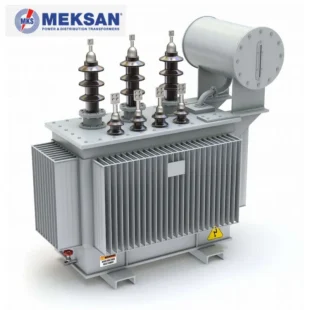- Your cart is empty
- Continue Shopping
33kv Silicon Disc
The silicone rubber housing of Composite Line Post Insulator were taken shape by whole injection. It has good hydrophobicity, hydrophobicity migration and soil resistance, as well as excellent electrical insulation properties and aging resistance, which could prevent effectively those accidents of pollution flashover so as to ensure the safe running of high voltage transmission lines.
33kv Silicon Disc
33kv Silicon Composite High Voltage Suspension Disc Electrical Suspension Silicone Rubber Insulator
In order to improve the mechanical strength of Electrical Insulator, dielectric strength and resistance to pollution flashover performance, improve production efficiency and reduce cost, to overcome the inherent shortcomings, ceramic and glass insulators to adapt to the development of electric power system, all countries in the world working with organic polymer materials as the base material of Silicon Rubber Insulator, used instead of the traditional ceramic and glass insulators.
Since the end of the 19th century appeared high voltage transmission lines, pottery and porcelain insulator used for the field of Silicon Rubber Insulator outside has 100 years of history, with the increase of voltage grade, insulator machine of point load, as well as atmospheric pollution, pottery and porcelain insulator performance exposed in the reuse of the defects. And the use of composite Suspension Insulator makes up the defect of the pottery and porcelain insulator and weaknesses.
RAW MATERIALS:
| End Fittings | Core | Sheds and Housing |
| Hot dip galvanized cast iron or cast steel | Epoxy & Glass fiber (ECR is available) |
HTV Silicone Rubber |
| Min. thickness of the galvanization: 86μm | Diameter(mm): Φ38, Φ40, Φ55, Φ70, Φ90, Φ120 | Color: Grey, Red |
Notes:
1. The color is according to the customers’ requirements.
2. Below 220kV electrical data shown for composite line post insulators without corona rings and mounted vertically. Wuhan Line Power recommends corona rings to be installed at 220kV and above.
3. Additional section lengths and creepage distances are available. Contact sales agency for details.
4. All dimensions, tolerances and tests are within allowable IEC standards or ANSI standards.
5. All dimensions are in millimeters(mm). If in inches and pounds, please specify.
6. We can design according to the end user’s requirements.
Product structure and advantages
Our company specializes in the production of composite insulators for transmission lines. The main structure is composed of rubber, epoxy glass fiber core and metal end fittings.
Compared with similar ceramic and glass insulators, silicone rubber insulators have the following advantages:
(1) Small size, light weight (1/7~1/10 times that of ceramic insulators with the same voltage), good elasticity of the shed, not easy to break, convenient transportation and installation, and economical.
(2) High mechanical strength. FRP rods have high tensile strength, which is 5-10 times that of ceramic materials. The cross-section of the core material is small, the product is small in size, light in weight, and high in tensile strength. It is easy to manufacture large-tonnage insulators above 300KN.
(3) High antifouling performance and good aging resistance. The silicone rubber injection molded shed has good hydrophobicity and mobility, which makes the insulator have high anti-pollution flashover voltage and good electrical corrosion resistance.
(4) Easy installation and maintenance, which can greatly reduce maintenance costs caused by power outages and manual labor intensity.
(5) The production process is simple and the delivery time is short.
- The silicone rubber housing of Composite Line Post Insulator were taken shape by whole injection. It has good hydrophobicity, hydrophobicity migration and soil resistance, as well as excellent electrical insulation properties and aging resistance, which could prevent effectively those accidents of pollution flashover so as to ensure the safe running of high voltage transmission lines.
- The modified ECR fiberglass reinforced epoxy resin rod is used as it has good resistance to high temperature, stess corrosion & acid attack, as well as fine damping action, high tensile strength (> 1200Mpa) and resistance to creep and fatigue failure, which effectively ensure the internal insulation quality and mechanical stength of insulators.
- End fittings are crimped onto fiberglass rod with voice-operated displacement type crimper. The insulators with this crimping technique have high mechanical strength and small dispersion. Taking the most advanced automatic overall injection moulding technic and connection method of crimping for production and assembling, and the whole crimping procedure controlled by computer and the crimping result monitored by ultrasonic detector to assure each product is qualified.
![]()
| Item | Requirement | Measured Valued |
| Visual examination | Fuchsine,grey or white, no obvious mechanical admixture. Vulcanized sillion rubber with dense and smooth cutting surface. |
Ok |
| Hardness (shore A) | ≮50 | 65~70 |
| Tensile strength (Map) | ≮4 | 4~6 |
| Failure elongation (%) | ≮150 | ≮180 |
| Tearing strength (kN/m) | ≮10 (right angle sample) | 12~15 |
| Volume resistivity (Ω.m) | 1X1012 | 3~8X1012 |
| Puncture strength (kV/mm) | Alternating current ≮22 | ≮30 |
| Tracking and erosion | TMA4.5,erosion depth≯2.5mm | TMA4.5, erosion depth <0.8mm |
| Flammability (Grade) | FV-0 | FV-0 |








